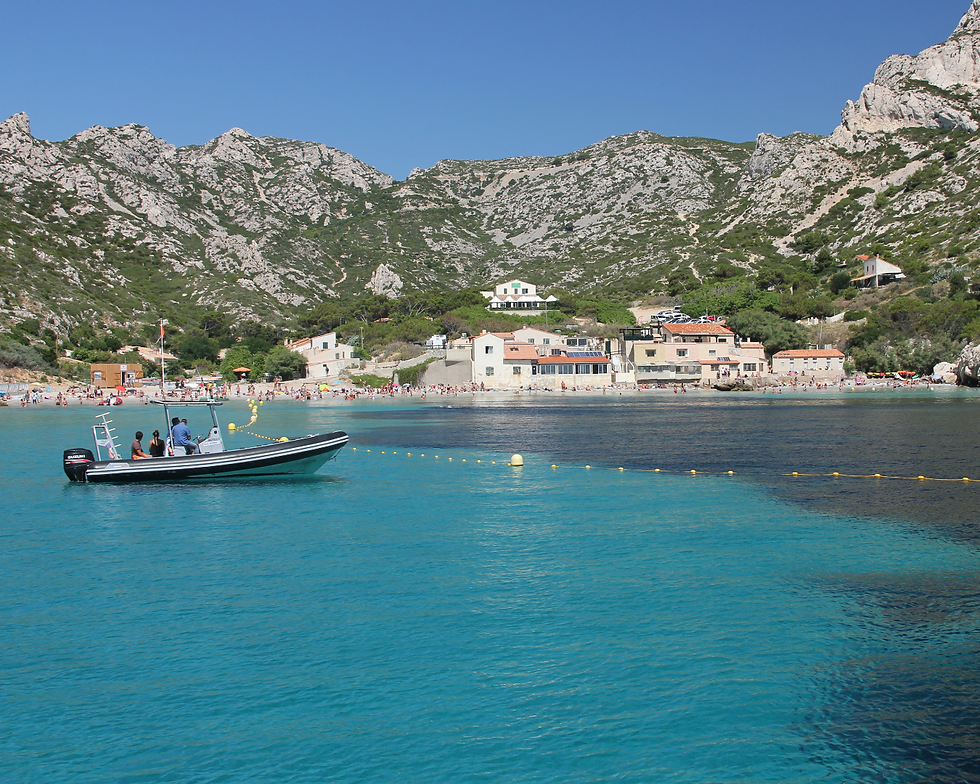Exploring Air Perspective in Landscape Art (Weekly Challenge #155)
- Natalia C.

- Jan 17
- 4 min read
Updated: Jan 23
Welcome back, Landscape Art Club members! I’m thrilled to take you on a tropical journey to Phuket, Thailand, for this week’s challenge. We’ll explore stunning coastal views, distant islands, and vibrant palms as we dive into mastering air perspective. This challenge is designed to help you convey depth and atmosphere in your landscapes, a crucial skill for bringing scenes to life.
Air perspective, also known as aerial perspective, is the way objects appear lighter, cooler, and less distinct as they recede into the distance. This natural phenomenon is caused by atmospheric particles scattering light, and replicating it in your art is key to creating depth and realism.
In this week’s reference photos, you’ll notice:
Vivid foregrounds that draw the eye with sharp details and saturated colors.
Soft backgrounds that gradually fade into hazy blues, mimicking the way we perceive distance.
If you’d like to dive deeper into how air perspective transforms landscapes, check out the related post on mastering air perspective. For more insights into adapting photos for art, don’t miss Why Copying Photos Doesn’t Work: How Composition Transforms Landscape Art.
Mastering air perspective doesn’t just enhance realism; it also helps you tell a story, set a mood, and guide your viewer’s eye through your artwork.
Analyzing the Reference Photos
Understanding the reference photos is a great way to identify opportunities and challenges for applying air perspective effectively. Let’s break them down:
Image 1: Sandy Beach with Distant Hills

Photo Strengths:
The sandy beach in the foreground provides a clear, textured starting point for the viewer.
The hills in the distance fade into cooler tones, creating natural depth.
The open sky offers a bright, spacious feel that contrasts beautifully with the foreground.
Challenge as a Painting:
Avoiding flatness in the mid-ground where the sea meets the beach.
Balancing the vibrant sand with the muted tones of the distant hills.
Focus Question:
How can you create depth in the open expanse of water and sand?
Solution:
Gradual Transition: Blend the sand into the water with subtle shifts in value and color.
Cooler Distant Tones: Use cooler blues and grays for the distant hills to emphasize their depth.
Foreground Details: Add fine textures to the sand to create contrast and anchor the composition.
Image 2: Traditional Boats Docked by the Shore

Photo Strengths:
The vibrant boats in the foreground immediately catch the eye with their rich colors and intricate details.
The calm water reflects light and enhances the composition.
The distant shoreline and sky offer a serene backdrop.
Challenge as a Painting:
Capturing the reflection of the boats without overwhelming the composition.
Maintaining the balance between the detailed foreground and the subdued background.
Focus Question:
How can you use the water’s reflections to enhance depth and harmony?
Solution:
Reflection Details: Soften the edges of the reflections to create a natural look.
Contrast Control: Use brighter colors for the boats and more muted tones for the background.
Foreground Anchoring: Highlight the textures in the sand or waterline to ground the scene.
Image 3: Boats on Calm Water with Urban Background

Photo Strengths:
The calm water offers a mirror-like quality that adds balance and symmetry.
The boats provide clear focal points with their vibrant colors.
The urban background introduces an interesting contrast to the natural elements.
Challenge as a Painting:
Avoiding a static feel due to the symmetry of the composition.
Integrating the urban background without distracting from the boats.
Focus Question:
How can you maintain the focus on the boats while incorporating the urban elements?
Solution:
Layered Focus: Emphasize the boats with sharper edges and vibrant hues, while softening the urban background.
Water Reflection: Use ripples or slight distortions in the reflections to add movement.
Foreground Interest: Add subtle details to the waterline to lead the viewer’s eye into the scene. including the person from the original photo or adjusting the framing to play with the tree’s proportions.
Image 4: Busy Shoreline with Trees and Hills

Photo Strengths:
The shoreline features a mix of trees and human activity, adding dynamism.
The distant hills fade gently into soft blues, creating depth.
The water’s horizontal expanse acts as a natural separator between the foreground and background.
Challenge as a Painting:
Simplifying the busy foreground without losing its energy.
Maintaining a clear distinction between the layers of the scene.
Focus Question:
How can you simplify the shoreline to direct attention toward the distant hills?
Solution:
Foreground Simplification: Use broader strokes and muted tones for the shoreline activity.
Layer Separation: Emphasize the cool tones of the hills to contrast with the warmer foreground.
Depth Enhancement: Gradually soften details and colors as the scene recedes.
These analyses demonstrate how air perspective can transform ordinary references into dynamic and engaging landscapes. By focusing on depth, you can elevate your painting’s storytelling potential.
Air perspective is more than just a technique; it’s a way to create immersive, lifelike landscapes that transport your viewer into the scene. This week’s challenge invites you to practice this essential skill while exploring the tropical beauty of Phuket. Whether you focus on the vibrant foreground or the hazy distance, air perspective will help you elevate your art to new heights.
Feel free to share your work or insights in the comments below!
Ready to dive into the beauty of Phuket and practice air perspective? Join our Instagram challenge! Here's how to participate:
Post your artwork by Thursday, 23 January 2025, 23:59 CET
Use the hashtag #landscapeartclub155
Tag @landscapeartclub to make sure I see your work!
Make sure that your account is public, otherwise I will not be able to see your post
I can’t wait to see what you create! Happy painting, and as always, stay inspired.


Really thoughtful and helpful analysis of the photos! Thank you, Natalia!